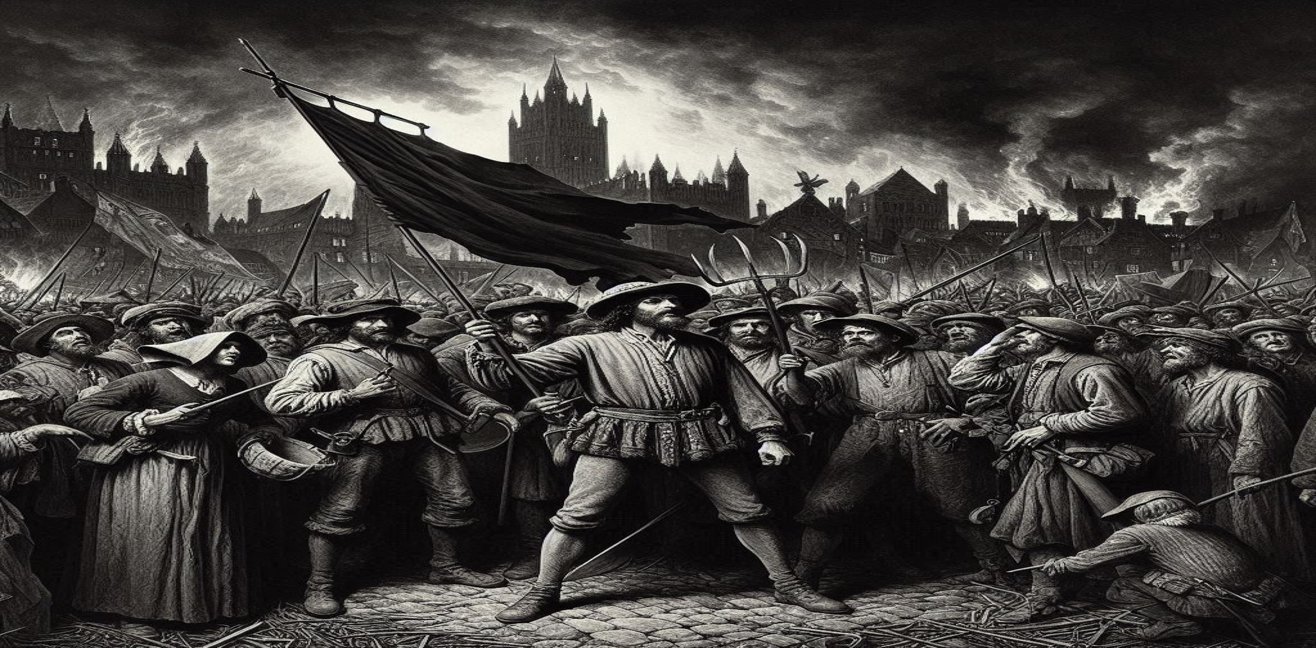In 14th century England, there was great chaos and social unrest. King Richard II’s government had imposed heavy taxes on the people to cover the costs of war. This led to widespread anger and dissatisfaction, especially among the peasants. This anger eventually transformed into a large-scale revolt under the leadership of Wat Tyler, targeting London in 1381. This article will explore in detail the Peasants’ Revolt, Wat Tyler’s leadership, the actions taken by the rebels, and the consequences of this historic event.
The Causes of the Revolt
The primary causes of the peasant revolt included economic factors such as the financial burden of the Hundred Years’ War, a decrease in the labor force following the Black Death, and the subsequent rise in wages. However, instead of improving the living standards of peasants, the government imposed heavy taxes and oppressive policies. The Third Poll Tax of 1381 was the final straw that broke the peasants’ patience. This tax required each individual to pay a fixed amount, creating widespread discontent among the people.
The Beginning of the Revolt and Wat Tyler’s Leadership
The revolt began in the southeast regions of England, including Kent and Essex. The peasants quickly organized and selected leaders. The most famous of these leaders was Wat Tyler, a charismatic peasant who emerged as a strong figure advocating for the rebels’ demands and uniting them. The rebels, with their calls for justice and reform, began their march towards London.
Entry into London and Initial Actions
On June 7, 1381, Wat Tyler and his rebels reached London. With the support of some locals, the gates of the city were opened to them. The rebels quickly seized key locations in the city. Their first targets were government buildings where King Richard II’s advisors and tax collectors lived. These buildings were set on fire by the rebels, leading to widespread destruction.
Releasing Prisoners and Seeking Justice
The rebels didn’t only target government buildings. They also stormed the prisons in London and freed the prisoners inside. Many of these prisoners were peasants who had been unjustly imprisoned. With this action, the rebels gained popular support and put further pressure on the authorities in the city.
The Fate of the Rich and Judges
One of the bloodiest events of the revolt was the targeting of the rich and judges. The rebels identified wealthy merchants who had exploited the common people, as well as judges who had made unjust rulings, and sought to punish them. Many wealthy individuals and judges were executed by the rebels. This caused widespread fear and chaos in the streets of London.
The Aftermath and Wat Tyler’s Death
Wat Tyler and the rebels were invited to meet with King Richard II on June 15, 1381, at the Tower of London. During the meeting, Tyler was killed by the king’s guards. With their leader dead, the rebels quickly dispersed, and the revolt was suppressed. However, the effects of the revolt lasted for a long time. The government was forced to address some of the peasants’ demands and made some changes to the tax system.
Conclusion
The Peasants’ Revolt of 1381 marked a significant turning point in English history. The entry of Wat Tyler and the rebels into London and the actions they took became symbols of the people’s pursuit of justice and resistance against oppression. This event laid the groundwork for social and economic reforms in England in the following centuries and contributed to the protection of people’s rights. The story of Wat Tyler and the rebels remains a symbol of the struggle for justice and freedom in history.

